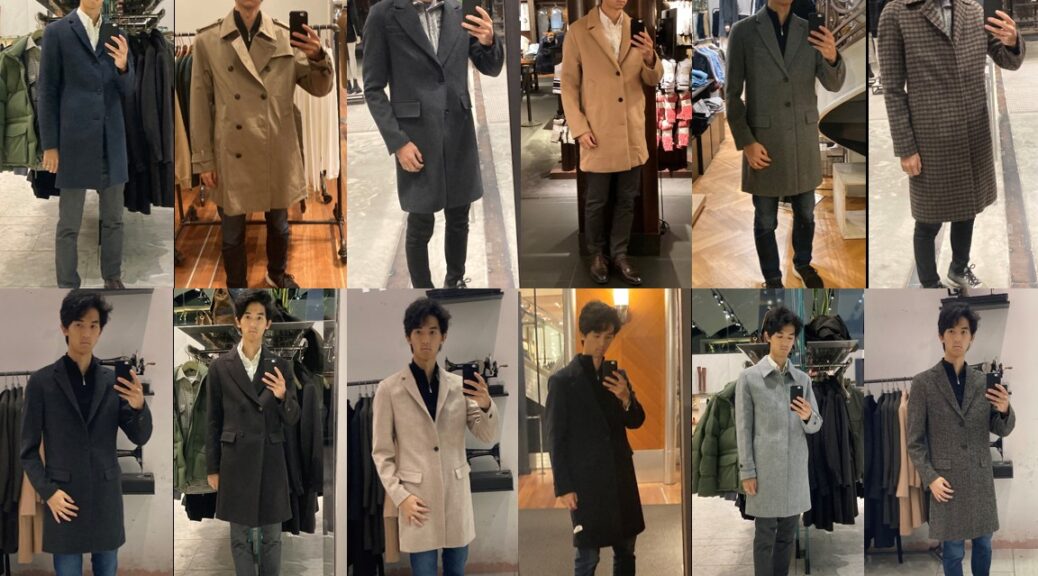This year, catalyzed by buying my wedding tuxedo, I had an epiphany: I can’t have no style.
Until recently, I wanted to opt out of worrying about clothes or having a style. This was a philosophy engendered by growing up in our immigrant household: impress with your cleverness and actions, not your looks. Who was I trying to influence as a kid anyway, and why invest in clothes I’d outgrow?
It’s not that I had no style. There is no such thing as no style, which I realize now. My parents efficiently clothed my brothers and me, so I adopted the style of an immigrant son. I was given Taiwanese hand-me-downs, free graphic tees, bargain bin cargo pants, and big jackets. Everything was oversized, and I didn’t think twice. The clothes were comfortable and I liked having pockets everywhere for mechanical pencils and a flip phone.
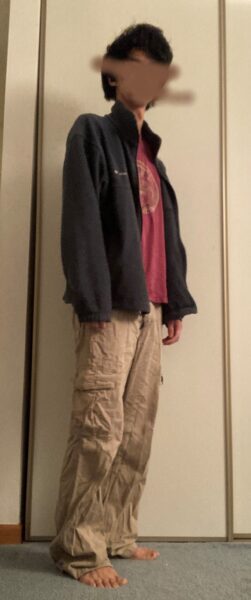
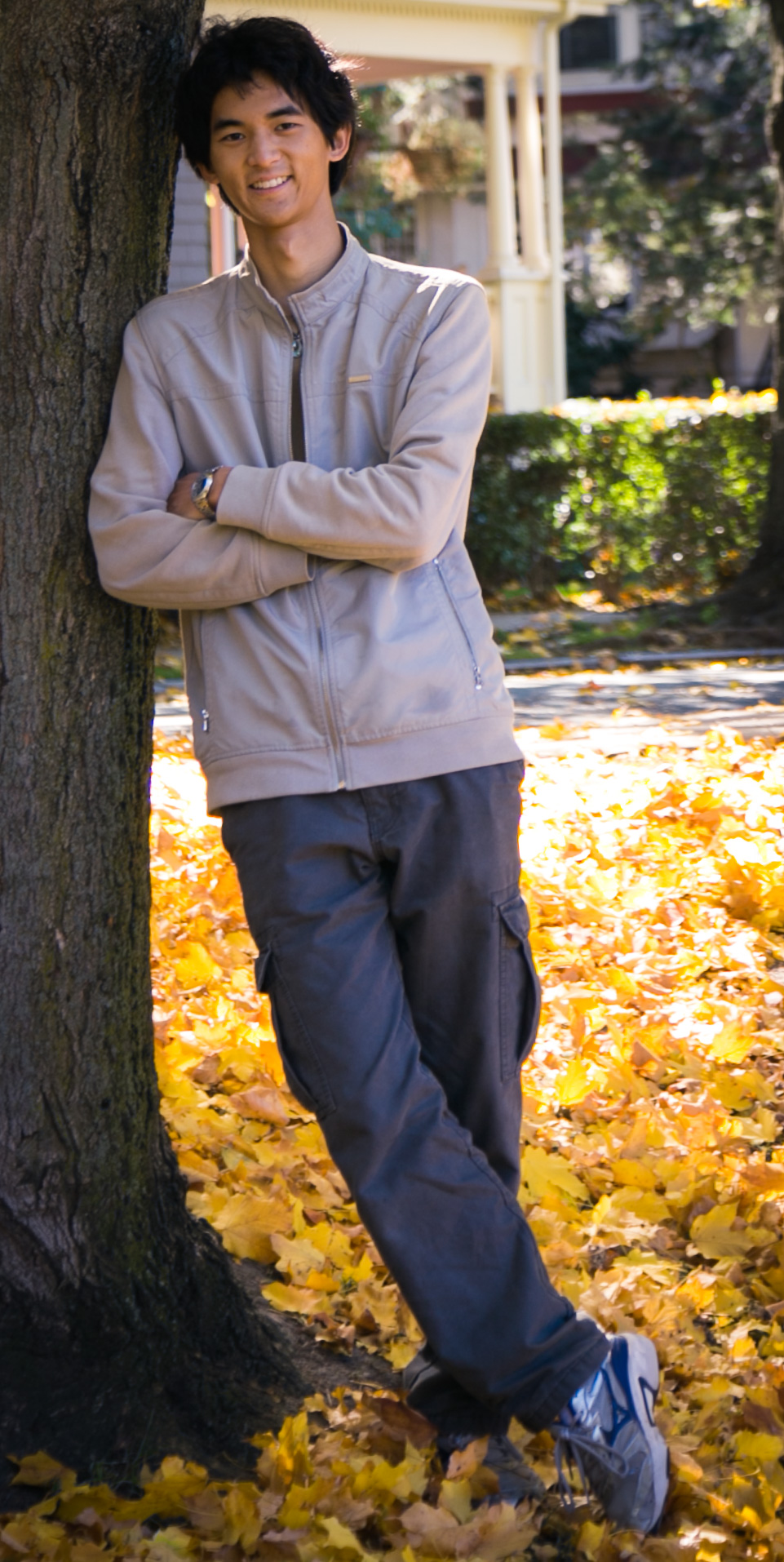

I didn’t mature in college, either. By spending the bare minimum of money, time, and attention to clothes, I defaulted to the style of not caring. So long as my garments kept me warm, decent, and not actively teased, it was fine. Cargo pants and big jackets forever!
The not-caring style demands nearly no conscious thought or effort, and I admire that. It’s the style of those who fully prioritize other interests. It’s the style of those who work so hard that they haven’t the time, attention, or money to devote to marginal purchases. It’s efficient! The style can manifest as ill-fitting cargo pants and tees, or workwear all the time, or hand-me-downs, or something else altogether. Whatever works becomes a style, and that’s kind of cool.
Many advantages enabled my persistent delusion. I’m male, possess a stable body habitus, and hail from California where negligent casual often suffices. I studied a major in which not caring was the majority style, and then entered a profession that wears pajamas full-time. However, disavowing a style can be presumptuous, disrespectful. It risks signaling that either you’re oblivious to the situation or that you believe etiquette is beneath you.
Nascent Style
Insecurity struck in summer 2014, on the cusp of medical school in New York City. Before meeting a fresh group of peers in a decidedly stylish city, I knew not to arrive dressed like a sloppy 23-year-old high schooler. During my final weeks in Santa Barbara, I frantically observed outfits of passers by and went on a mini shopping spree. The result was that I sized down (incompletely, sadly) and pivoted from graphic tees and cargo pants to my new uniform: eight solid color tees and four jeans/pants. My dad blessed me with his old shirts and ties from Taiwan, my brother gifted me a heavy army jacket, and off I went to NYC.
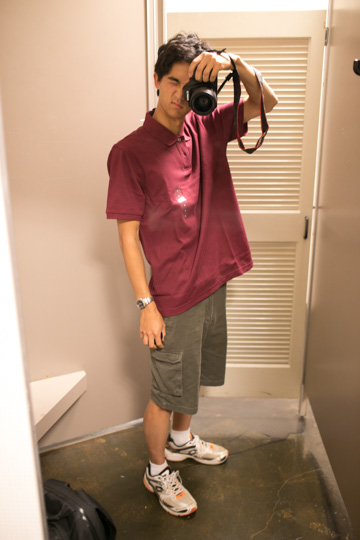
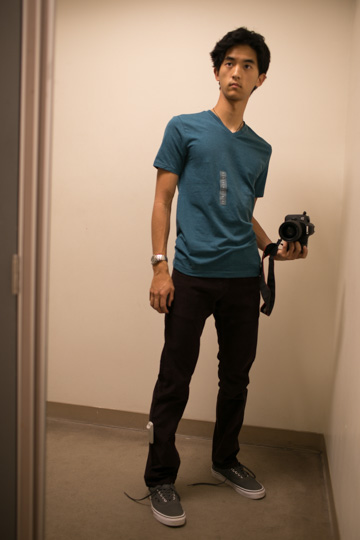
I glimpsed the revelation then: clothes can’t say nothing. Clothes are woven into our cultural language, and everything and everywhere has a dress code, usually implicitly. Obviously I’d be booted from a black tie event for flip flops (clop clops), but did I have the right clothes for the hospital? Would colleagues and patients write me off as sloppy? Would I be swiped away from first dates?
Yet, despite photography cluing me into the importance of visual first impressions, my appearance was hampered by negative income, lingering naivete, and old habits. I was that messy-haired gangly Asian with a thoughtless Californian-ish style, and that didn’t cut it. My classmates teased me for too-short shirt sleeves. My preceptor scolded me for wearing ratty sneakers to family medicine clinic. Who knows how many more interactions were silently impaired by my neglected clothes…
My attitude shifted again in 2018 when I moved to residency in Greenwich, CT which I feared to be even more superficial. A positive income helped fund some wardrobe tweaks. However, Katie brought the biggest change.
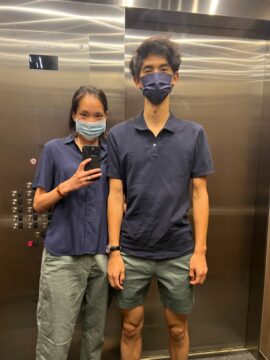
As much disdain Katie holds for clothes shopping, she definitely has a style, what I think of as streamlined boyish preppy. I’m guessing she’s influenced by her stylish sisters, her prep school experience, and the world of finance where no one can eschew style. Katie passed this unto me in the form of shopping tips from her male coworkers, a steady stream of gifted footwear (I bought hers, too!), a waxed cotton jacket, and gentle encouragement. Also, Katie’s squash club/gym is a jackets-required social club, so wearing my decade-old ill-fitting Macy’s black suit was getting weird. Then, in 2022, getting married called for a wedding tux, and that changed everything.
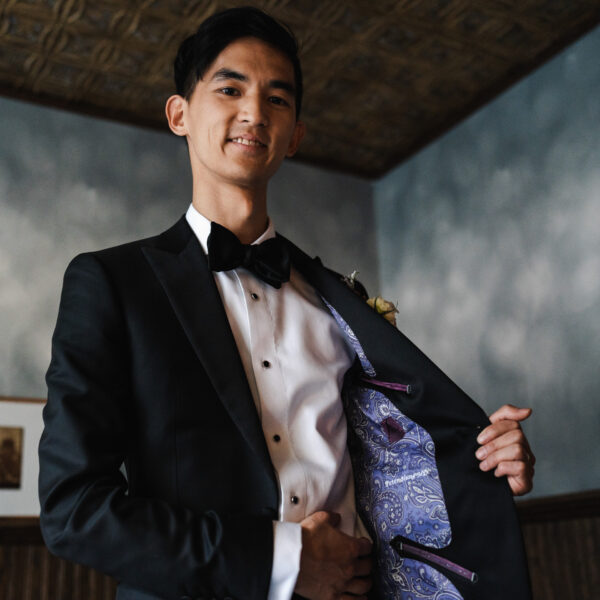
Money, Time, Attention
Clothes cost money. Finding good deals takes time. Deliberating a style requires attention.
This, year, inured by us paying for our wedding, I let myself spend a bunch on clothes. Obviously, this privilege enabled my style to progress. Having obsessively tracked my expenses for 12 years reveals entertaining insights:
- From 2010–2021, clothes averaged 2.0% (range 0.27%–5.7%) of my non-rent/tuition expenses. 60-70% of this value remains in some active rotation.
- I spent $544 on the 2014 wardrobe refresh. This excludes gifts.
- 2022 alone accounts for 60% (~55% adjusted for inflation) of my lifetime clothes expenditure, more than the entire preceding decade.
- My top brands are Grey Clothiers (menswear), Asics (running shoes x5), Uniqlo (various staples), Brooks Brothers (6 shirts, a scarf), and American Eagle (preferred brand in 2014).
Budgeting time was crucial too. I made time to shop: visiting stores all over the city, getting a sense of the market, trying on garments, and frequently leaving with new ideas instead of purchases. Living in Manhattan is a blessing. When Katie was out of town for Black Friday, I legitimately spent an entire day walking the length of the island (i.e. endless retail) trying on overcoats and jackets.
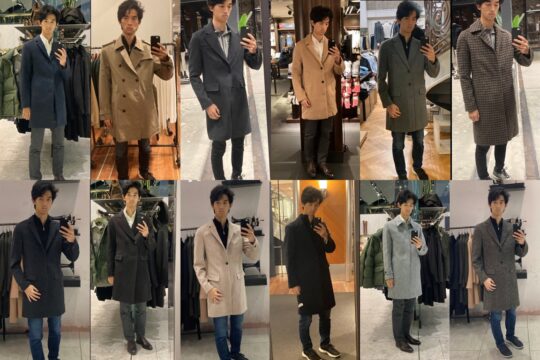
Most importantly, I committed attention to style. Efforts to learn more about clothes ranged from listening to the podcast Articles of Interest which catalogued the history of the classic American look “Ivy” to paying attention to my sister-in-law’s menswear obsessed friends. Volunteering my email to brands’ promotional listservs opened the floodgates to social media ads and “get ready with me” reels. This year, I started to believe that clothes could actually work in my favor.
The Primacy of Fit
Good fit is paramount. If only I’d learned this earlier, then I would’ve stopped drowning in oversized stuff that made me appear even skinnier.
My oddly proportioned body (extreme skinniness, long arms and wide shoulders) complicates clothes shopping. As a kid, wading through bargain stores like TJ Maxx and Marshalls convinced me that a good fit was legitimately impossible to find. I settled for either sleeves too long or torsos too loose, and either pants legs too short or waists too baggy. However, the proliferation of online shopping has trivialized finding correctly sized pants (28”-32”). Good shirts are still elusive, but thankfully slim fit is in vogue and caters to my piteous physique.
Alternatively, the issue of fit can be addressed with tailoring or made-to-measure garments, i.e. more money. Thus, the genesis of my wedding tux. I also splurged on custom-made suits and dress shirts; I’m optimistic that snazzy menswear will be a durable investment. Again, it’s fortunate that suits are such a static uniform.
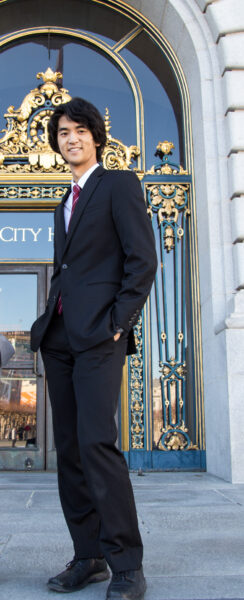
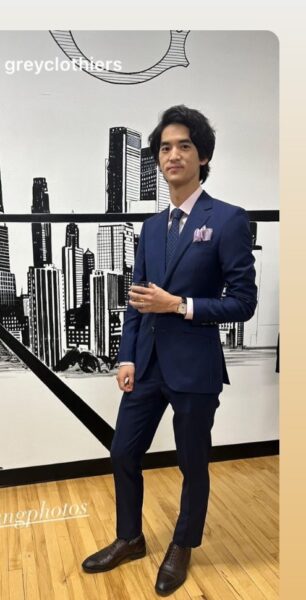
Sustainability, Wardrobe Longevity
The environmental toll of the fashion industry is staggering, and the surefire way to dress sustainably is to buy less clothes.
I purchase carefully, preferably in-person, and have only returned a shipped item once (running shoes too narrow). Returned items, even in sellable condition, are liable to slip into the landfill. The clothes donation/resale pipeline is shoddy and cannot offset overconsumption, so I wear my stuff basically until they disintegrate. They’d sooner fall out of fashion than me let them go.
Notable losses: After my sole H&M purchase, a pack of dress socks, wore through within a year, I disavowed fast fashion. I’m resigned to rapidly wearing through pants as a bike commuter with sharp ischial tuberosities (bony butt), and hospital dress code doesn’t allow butt patches. 4 pairs of running shoes have been ground down, each by about 1100 running miles and uncountable walking miles. I lost my singular new graphic tee (from my friend’s band) to the car accident.
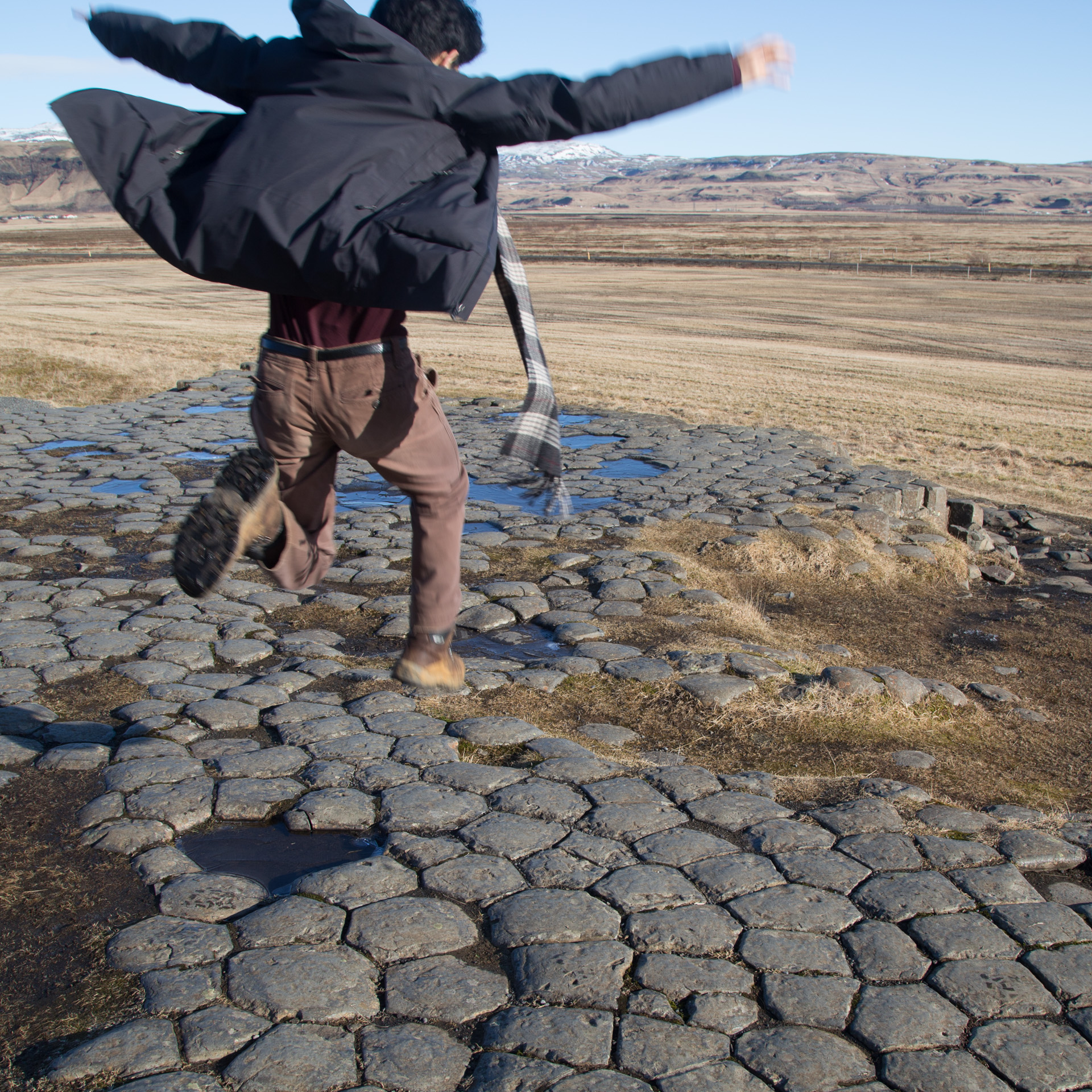
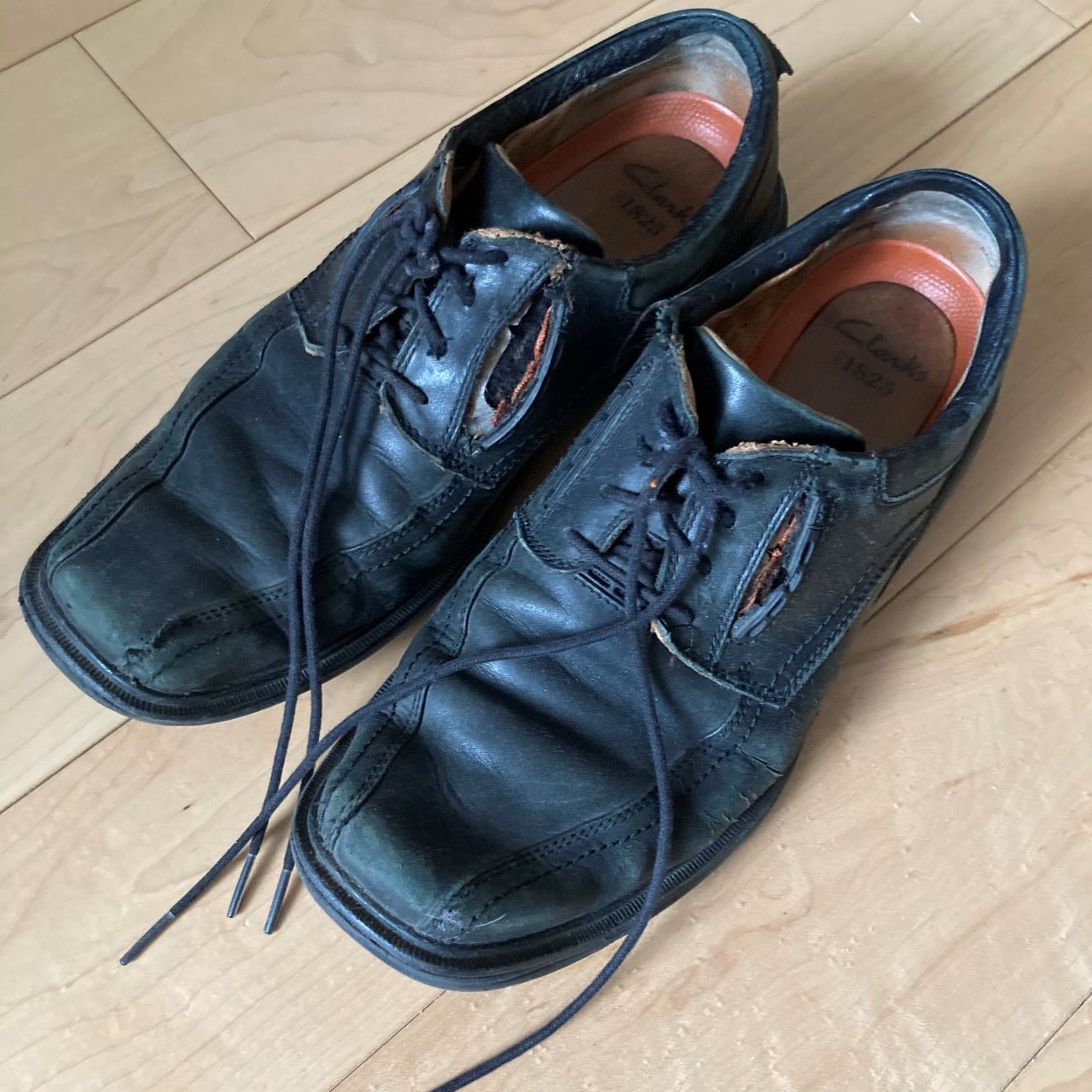
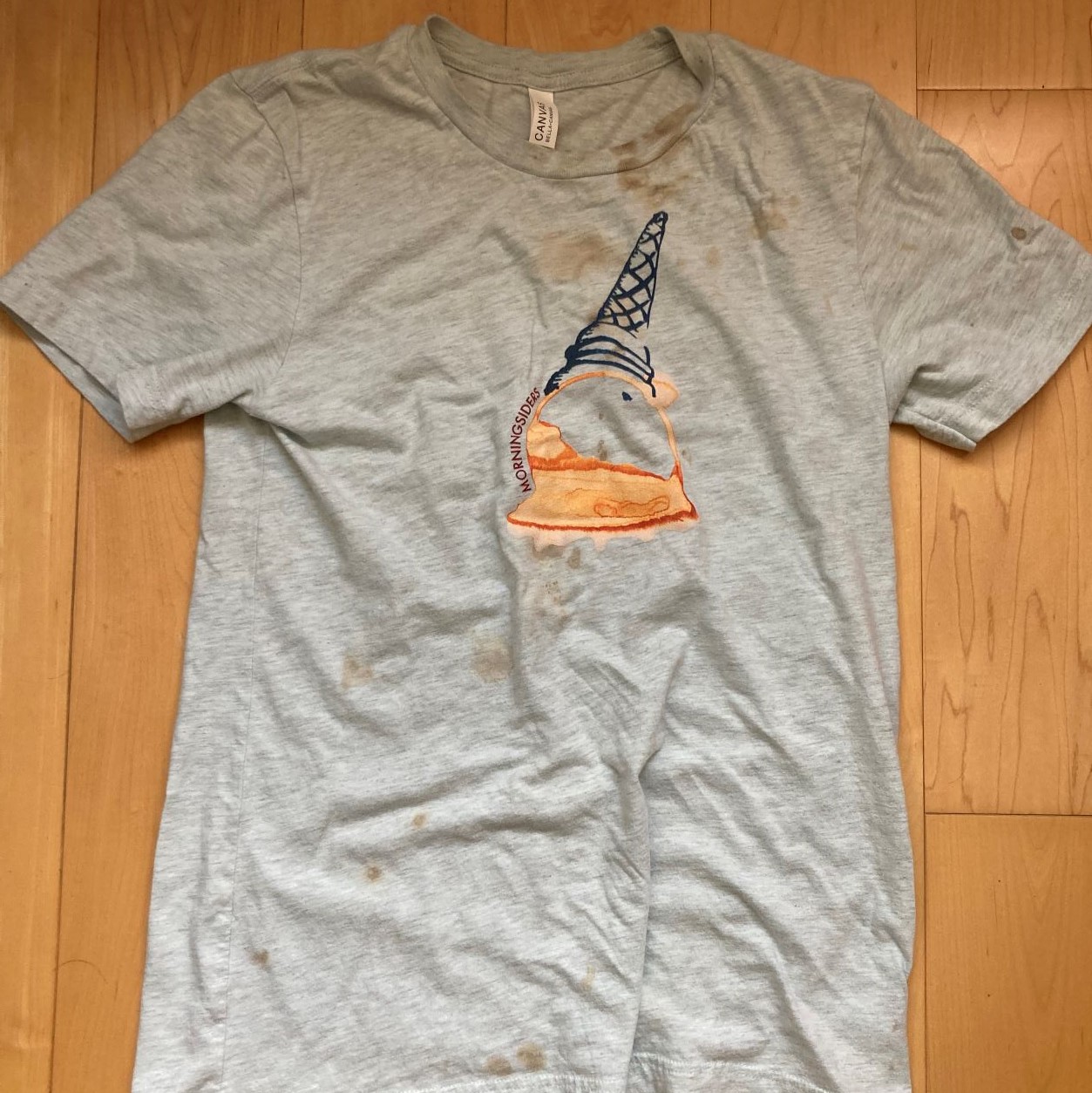
Novel sustainable textiles play a smaller role than downsizing, and unfortunately I regret my first foray into explicitly eco-friendly apparel: Allbirds Tree Runners shoes. The material’s flimsy structure incited Achilles tendonitis, and I’ve returned to Asics Gel-Cumulus.
Laundry technique affects garment longevity. Frequent washing incurs water heating costs, consumes detergent, and hastens fiber degradation; whereas infrequent washing risks smells, sweat damage, and skin irritation. I’m trying to balance this.
2022 Wardrobe Updates
Formalwear: Suits, see above. A lovely Japanese tie. Also a kurta for my co-chief’s wedding.
Outerwear: I thrifted for an overcoat. I’m still shopping for a spring/fall jacket.
Casualwear: I pivoted from tees to polos.
Activewear: I upgraded to Tracksmith. From February 2015–June 2022, I ran exclusively in two New Balance running shorts and one Uniqlo thermal underwear.
Workwear: My hospital gave me embroidered Figs scrubs. Modern healthcare workwear style—i.e. Figs scrubs—is counterintuitive. Shouldn’t scrubs be loose-fitting and protective, laundered aggressively, and distinctly for hospital use only?
Footwear: Shoes were my latest step. I’d clung to the “running shoes always” philosophy, prioritizing the ability to break into a run whenever I pleased. This year, I diversified my shoe rack by adding brown oxfords, brown lace-up boots, white-soled sneakers, and new running shoes. Dipping into leather boots necessitated learning basic leather care.
Grooming: My style of having an unruly Asian mop partly originates from penny-pinching on haircuts, but I still love having big, wild hair. I shouldn’t… Skincare for my finicky facial skin also remains an issue.
Accessories: Perhaps this year’s wardrobe update was merely an attempt to align my clothes with my new watch (in-laws’ wedding gift) and wedding ring. For my birthday, Katie gifted me a pair of sunglasses since my radiological eyes are worth protecting and my camera (which hindered wearing sunglasses) had just been destroyed.

Opting in to Thinking about Style
Suddenly, people are talking about my clothes! My suit garners comments from friends, neighbors, even strangers on subway platforms. I get sock-checked at work. People approach me at parties to talk watches!
This is a stunning reversal. Seriously, jumping abruptly from apologizing for my clothes to accepting compliments is jarring. Claiming responsibility for my style is a positive change, I hope… Part of me fears judgment from people who abhor wearing extravagance, naked vanity, conspicuous consumption, brand elitism, or other negative fashion stereotypes. High school-age Peter surely would’ve sneered at this evolution, but nowadays this feels like necessary maturation.
I think I get it now. Clothes can empower. Your wardrobe is a vital extension of your body, and you should choose to fashion it with care.
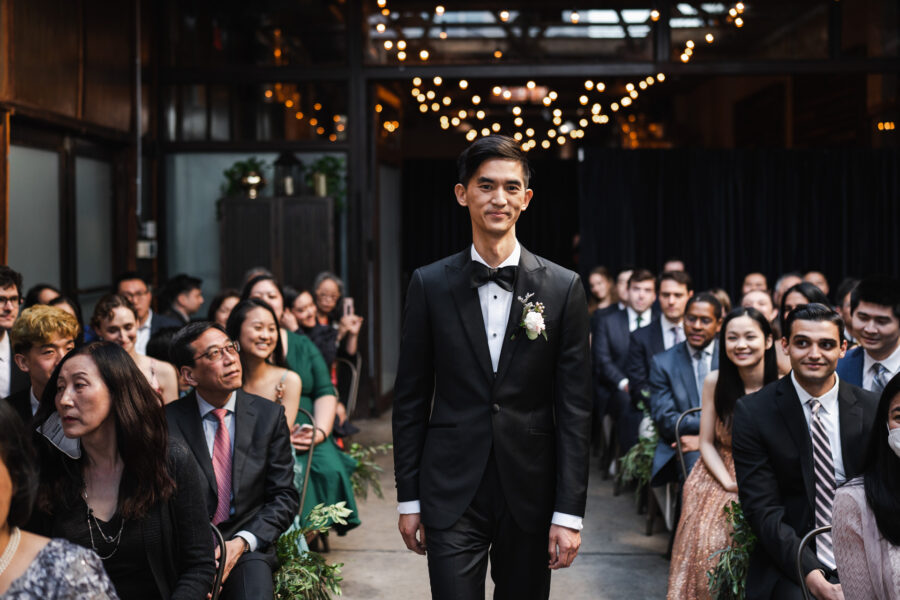
Thanks to Grey Clothiers for sparking this year’s journey (check them out in NYC), Theo for recommending Grey, Jackie for being an unerring style consultant and inspiration, and of course Katie.
